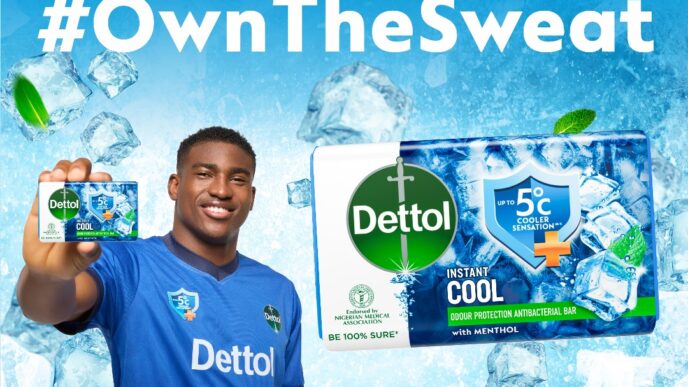One of the wonders of the dairy industry is its production of a wide variety of nutritional products that suit any consumers’ preference. In Nigeria, milk and creamers are two common options, yet they differ in terms of nutritional value and health. Most consumers usually leave the choice of what to add to their tea or coffee to whatever is available and costs less without paying attention to the fine nutritional print. Increasingly, creamers are being consumed because they are more affordable than milk. However, the decision to choose a dairy, non-dairy creamer or milk is more than a matter of taste or price. It holds significant impact on one’s overall wellbeing that most people don’t know about. Compared to others, milk stands out as a healthier, more nutritious option for consumers.
To help clear the difference, we will break down the key differences between milk and creamers:
Milking the Benefits
High-carb diets are quite common in Nigeria, which makes the inclusion of nutrient-rich foods vital in our daily consumption. Milk offers many benefits that contribute to a healthy and balanced diet. Packed with essential nutrients like calcium, protein, and vitamin D, milk supports our bodies in ways that creamers cannot. A daily glass of whole milk (220ml, 32g powder) covers:
- 15% of the daily need for protein
- 46% of vitamin B12
- 33% of phosphorous
- 28% of calcium
- 26% of vitamin B2
- 24% of vitamin A (fortified)
Milk is essential for all ages especially in growing children. A lack of protein over a period of time will result in reduced growth in children and increased rate of stunting in young children. Same with calcium and other essential vitamins found in milk. A sufficient supply of calcium during childhood and adolescence optimises bone structure and is essential for optimal teeth structure and maintenance.
Milk also contains vitamin B12 which contributes to the normal functioning of the immune system. A lack of vitamin B12 results in tiredness and fatigue.
The nutritional needs for milk differ depending, on age and physiological status and are higher during growth, pregnancy and lactation. When we grow older, a daily intake of dairy can reduce the age-related loss of muscle mass and function. Thereby decreased risk of falls and fractures and loss of mobility.
What are Creamers?
Creamers can be found in both non-dairy and dairy-based versions as a substitute for milk, with the latter sometimes containing added oils like coconut or palm oil. They are typically liquid or powdered products designed to mimic the creamy texture of milk or cream without being actual dairy.
While some creamers are made with dairy, many commercial versions are often packed with artificial flavours, sugars, and emulsifiers typically used to sweeten and thicken coffee or tea by embodying the consistency of milk. These non-dairy creamers can often be high in calories with a typical serving containing 25-35 calories; offering almost 0% daily value of iron and calcium.
The Milky Difference
In comparison to creamers, milk is nutritious and not easy to substitute. It is rich in essential nutrients like vitamin B12, phosphorus and, particularly calcium and protein, which creamers, particularly non-dairy creamers, lack. A single cup of whole milk provides about 300mg of calcium, and 8g of high-quality protein which is crucial for strong bones and teeth as well as muscle growth and repair. Many creamers, unless fortified, offer little to no calcium or vitamin D; acting as a less supportive option for children’s development, as well as the health and maintenance of bone density in adults. A sufficient supply of calcium during childhood and adolescence optimizes bone structure when you grow older (optimal peak bone mass).
Additionally, when looking at sugar content and healthy fats, creamers often contain added sugars to enhance flavour profiles and offer product variations such as vanilla, cinnamon, peppermint, and other flavours on the market. These additives contribute to a higher overall sugar intake in contrast to milk which contains naturally occurring sugars (lactose) that help maintain stable blood sugar levels and reduce the risk of chronic diseases such as obesity and type 2 diabetes.
The Nutritional Comparison
Let’s look at the average nutritional breakdown of both options in 32g of powder (200-240ml drink) according to NRV Codex Alimentarius:

Making the Healthier Choice
While both creamers and milk have their places in the Nigerian market, the fundamental nutritional differences between the two underscores the benefits of milk and dairy as a whole. A lot goes on behind the scenes within the dairy industry to bring milk’s natural goodness from farm to table. Companies like Arla Nigeria (makers of Dano Milk and other dairy products) work to ensure that Nigerians can access high quality milk and are informed on the health benefits available to them in just one glass.
To make informed choices between creamers and milk, it is important to consider value over availability. When next you go to the store, take a few seconds to read the labels and review the ingredient list for the adequate nutrients you need. If you intentionally choose creamers as an alternative to milk, then make sure you are able to balance your diet in other ways and are getting your nutrients from other food healthy sources.
If you do love milk and want to enjoy every benefit it has to offer, then look out for Dano Full Cream, Dano Cool Cow, Dano Slim or our evaporated milk for essential vitamins and minerals that promote your strength and well-being.
Add a comment












